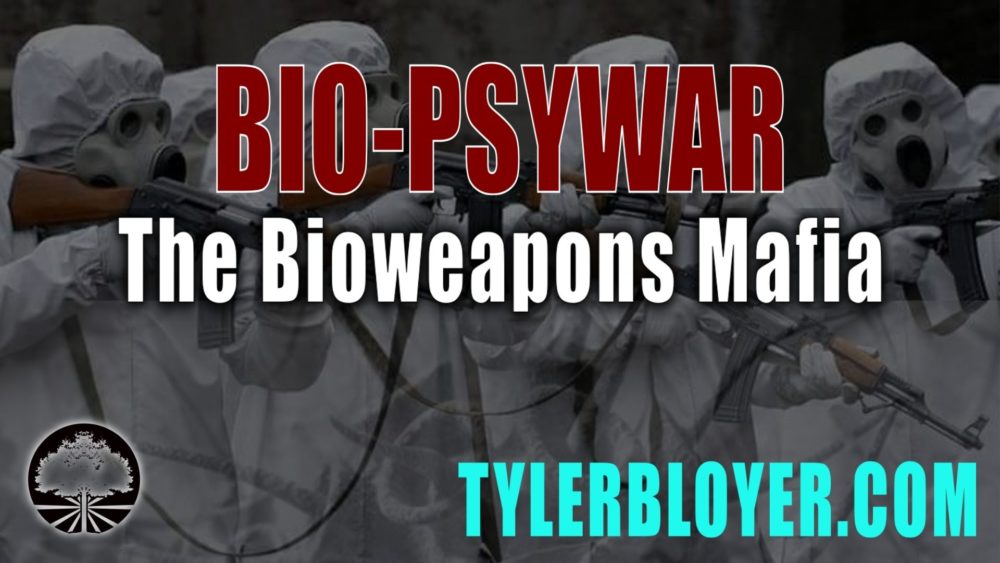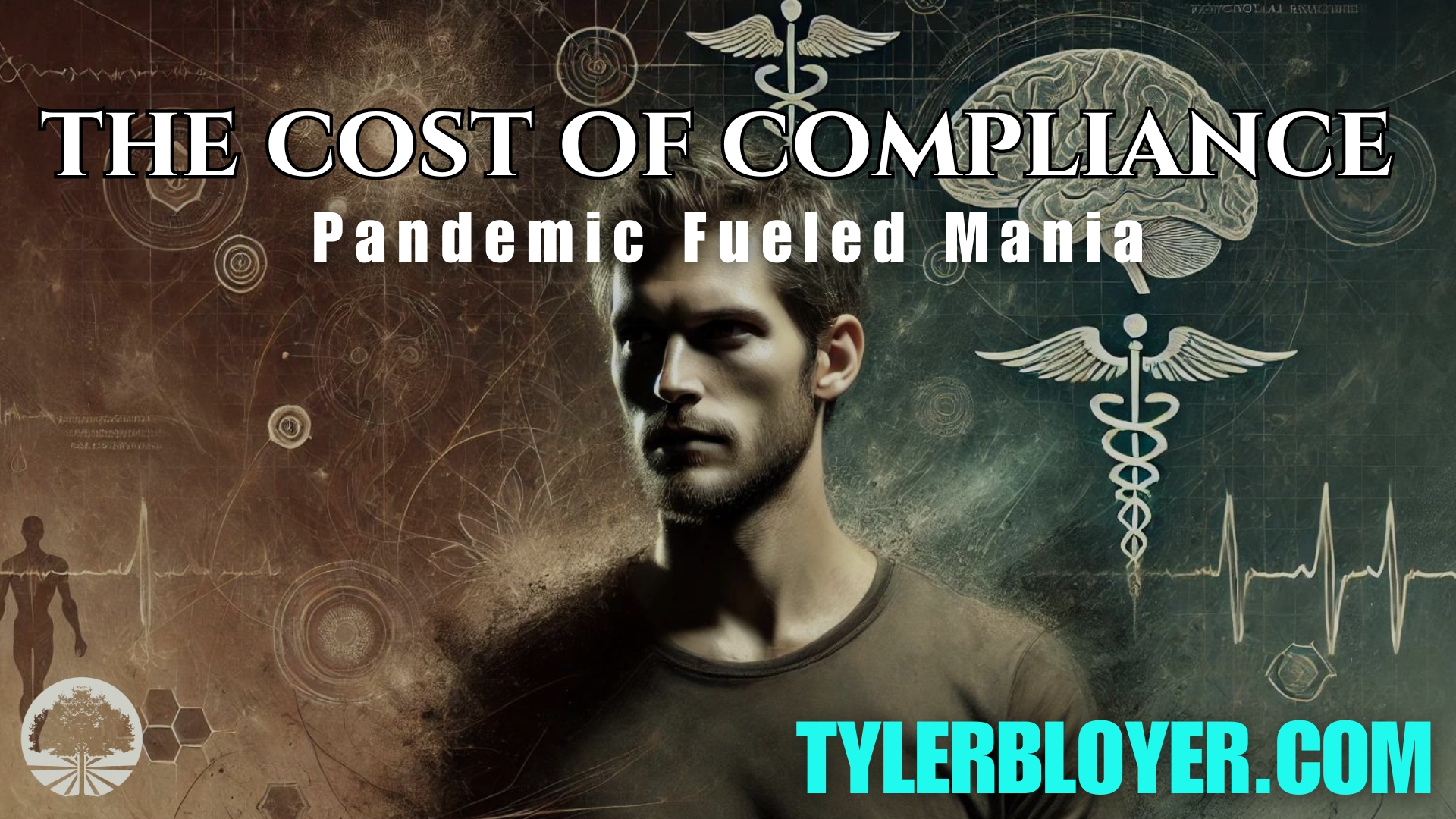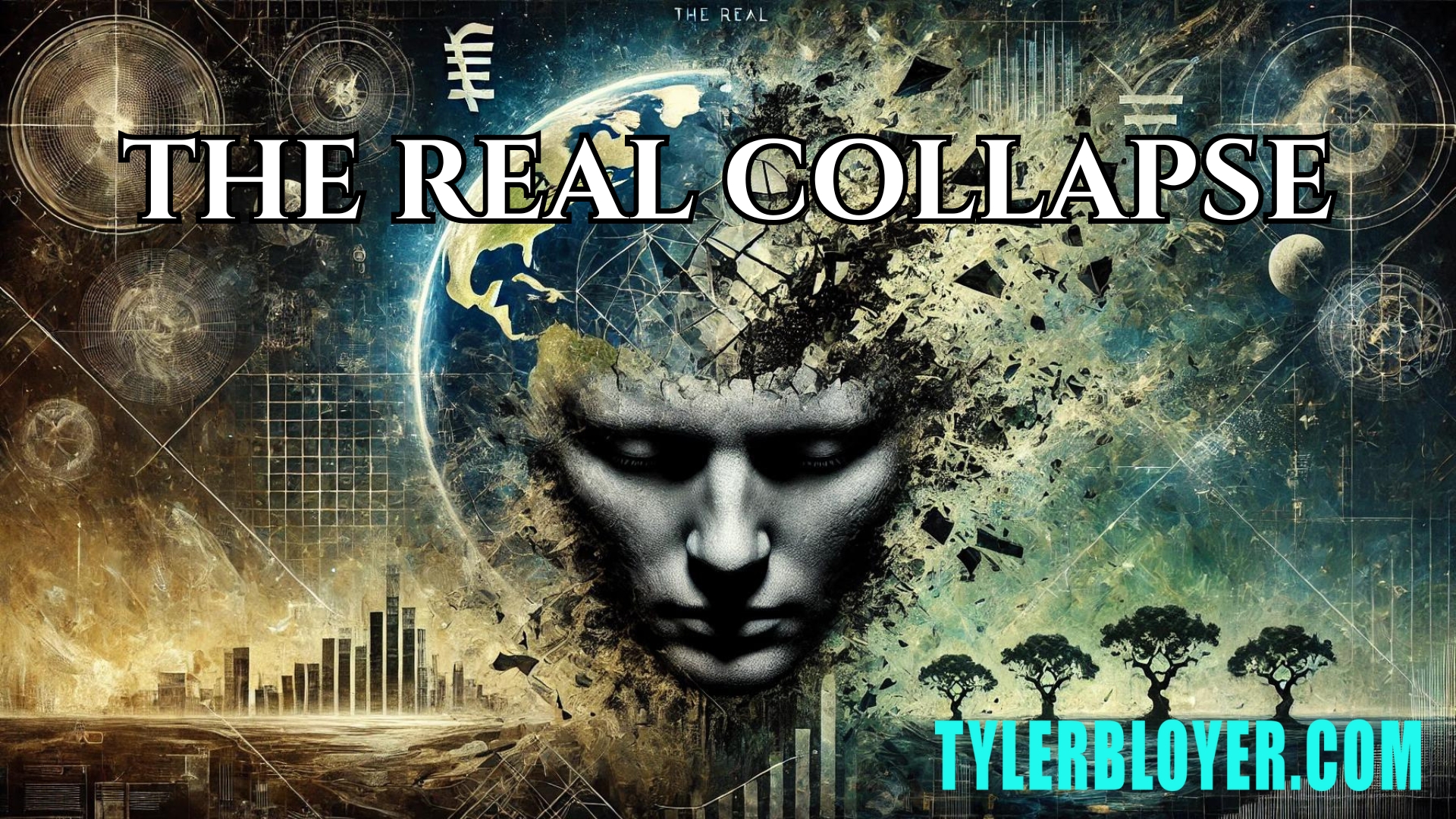Bio-PsyWar | The Bioweapons Mafia
Podcast: Play in new window | Download
Subscribe to Audio version: Apple Podcasts | Spotify | Amazon Music | Android | iHeartRadio | Podcast Index | TuneIn | Deezer | RSS | More
Watch Video on: | Bitchute | Odysee | YouTube | Flote | IPFS | Download Video
Welcome to the Bio-PsyWar, “The Bioweapons Mafia”. This is part 13 in the series.
This episode is a continuation of the recent work I’ve done on:
- Getting Ready for Human 2.0
- CyberPentagon
- Total PSYOP Awareness
- Bio-PsyWar | Purpose and Scope
- Bio-PsyWar | Commencement of Hostilities
- Bio-PsyWar | Strategic Psychological Operations
- Bio-PsyWar | Double Edged Developments
- Bio-PsyWar | Tick-Tok Bio-Op
- Bio-PsyWar | Tick-Tok Bio-Op P2
- Bio-PsyWar | Aerosolized Innovations
- Bio-PsyWar | Self-Fulfilling Catastrophe
- Bio-PsyWar | Research of a Different Color
- Bio-PsyWar | Message In The Anthrax
- Bio-PsyWar | A Higher Form of Killing
- Bio-PsyWar | The IG Kartell
- Bio-PsyWar | The Bioweapons Mafia
See Also:
- The Creature of Control Brain from TylerBloyer.com
- Dave Emory: Archives
- FTR #1119 and FTR #1120 DARPA and the Covid-19 Outbreak, Part 1 and DARPA and the Covid-19 Outbreak, Part 2
- FTR #‘s 1135, Lyme Disease and Biological Warfare, Part 1
- FTR #1156 Bio-Psy-Op Apocalypse Now, Part 16: An Ounce of Prevention.
- FTR #‘s 1157, 1158 and 1159–Bio-Psy-Op Apocalypse Now, Parts 17, 18 and 19: An Ounce of Prevention, Parts 2, 3 and 4
- Peter Daszak’s EcoHealth Alliance Has Hidden Almost $40 Million In Pentagon Funding And Militarized Pandemic Science
- The Lancet – Will influenza be the next bioweapon?
- Synthetic biology raises risk of new bioweapons, US report warns
- Synthetic recombinant bat SARS-like coronavirus is infectious in cultured cells and in mice
- US officials revisit rules for disclosing risky disease experiments
- Fort Detrick lab shut down after failed safety inspection; all research halted indefinitely
- US military plan to spread viruses using insects could create ‘new class of biological weapon’, scientists warn
- A Biosecurity Failure -America’s key lab for fighting infectious disease has become a Pentagon backwater.
- Bats, Gene Editing and Bioweapons: Recent DARPA Experiments Raise Concerns Amid Coronavirus Outbreak
- Forget Ebola, Sars and Zika: ticks are the next global health threat
- House of Representatives orders Pentagon to investigate whether ticks were once used as biological weapons
- Double-Edged Innovations: Preventing the Misuse of Emerging Biological/Chemical Technologies
- Project Coast
- The Creature Of Control Podcast – The Crypto Evolution Of EpiEugenics And “Population Control”
Below is an excerpt from the article: Peter Daszak’s EcoHealth Alliance Has Hidden Almost $40 Million In Pentagon Funding And Militarized Pandemic Science by Sam Husseini. Follow the link in order to read the full article.
“Pandemics are like terrorist attacks: We know roughly where they originate and what’s responsible for them, but we don’t know exactly when the next one will happen. They need to be handled the same way — by identifying all possible sources and dismantling those before the next pandemic strikes.”
This statement was written in the New York Times earlier this year by Peter Daszak. Daszak is the longtime president of the EcoHealth Alliance, a New York-based non-profit whose claimed focus is pandemic prevention. But the EcoHealth Alliance, it turns out, is at the very centre of the COVID-19 pandemic in many ways.
To depict the pandemic in such militarized terms is, for Daszak, a commonplace. In an Oct. 7 online talk organized by Columbia University’s School of International and Public Affairs, Daszak presented a slide titled “Donald Rumsfeld’s Prescient Speech.”:
“There are known knowns; there are things we know that we know. There are known unknowns; that is to say, there are things that we know we don’t know. But there are also unknown unknowns — there are things we don’t know we don’t know.” (This Rumsfeld quote is in fact from a news conference)
The Pentagon
The Pentagon (Credit the Smithsonian)
In the subsequent online discussion, Daszak emphasized the parallels between his own crusade and Rumsfeld’s, since, according to Daszak, the “potential for unknown attacks” is “the same for viruses”.
Daszak then proceeded with a not terribly subtle pitch for over a billion dollars. This money would support a fledgling virus hunting and surveillance project of his, the Global Virome Project — a “doable project” he assured watchers — given the cost of the pandemic to governments and various industries.
Also on the video was Columbia University professor Jeffrey Sachs. Sachs is a former special advisor to the UN, the former head of the Millennium Villages Project, and was recently appointed Chair of the newly-formed EAT Lancet Commission on the pandemic. In September, Sachs’ commission named Daszak to head up its committee on the pandemic’s origins. Daszak is also on the WHO’s committee to investigate the pandemic’s origin. He is the only individual on both committees.
These leadership positions are not the only reason why Peter Daszak is such a central figure in the COVID-19 pandemic, however. His appointment dismayed many of those who are aware that Daszak’s EcoHealth Alliance funded bat coronavirus research, including virus collection, at the Wuhan Institute for Virology (WIV) and thus could themselves be directly implicated in the outbreak.
For his part, Daszak has repeatedly dismissed the notion that the pandemic could have a lab origin. In fact, a recent FOIA by the transparency group U.S. Right To Know revealed that Peter Daszak drafted an influential multi-author letter published on February 18 in the Lancet. That letter dismissed lab origin hypothesese as “conspiracy theory.” Daszak was revealed to have orchestrated the letter such as to “avoid the appearance of a political statement.”
Sachs for his part seemed surprised by Daszak’s depiction of Rumsfeld but Daszak reassured him. “It’s an awesome quote! And yes, it’s Donald Rumsfeld, Jeff, and I know he’s a Republican, but — what a genius!”
https://www.independentsciencenews.org/news/peter-daszaks-ecohealth-alliance-has-hidden-almost-40-million-in-pentagon-funding/
Below you’ll find an excerpt from an article posted in the Lancet Journal in September of 2003. Find the full article here.
The idea that influenza could be so lethal prompted Madjid and colleagues to consider the virus’s potential as a bioweapon. They report their concerns—in particular, the soon-to-be-completed sequencing of the influenza genome from the 1918 epidemic that killed 40 million people—in the Journal of the Royal Society of Medicine (2003; 96: 345–46). “Unlike anthrax or smallpox, influenza is available, it can be aerosolised, the incubation period is short and inoculation doesn’t protect you during this time”, explains Madjid. “Moreover, if an epidemic starts, it may look natural because flu happens every year. And, whether man-made or natural, it can rapidly overwhelm and paralyse the whole health-care system.”
Critics say that it would be hard to create an influenza strain that is virulent enough to pose a significant threat. But, counters Klaus Stohr, project leader for WHO’s Global Influenza Programme, “the tools to create a virulent strain are readily available”. With reverse genetics—the same technology that was used to construct a vaccine against the H5N1 influenza strain (Drug Discovery Today 2003; 8: 518–19)—“we can readily produce the surface proteins and other proteins needed to assemble viruses on demand”, he says. “We could reproduce the 1918 virus or develop one that is completely new, put it together with other proteins necessary for the virus to function, and then release it”.
Stohr would prefer to use reverse genetics and other technologies to develop cross-subtypespecific vaccines. “We have the haemagglutinin genes H1-H15, and we should have vaccines that protect against H1 and H3, which are currently circulating, and any new or possibly emerging strains.” Because new vaccine development requires investments on the part of pharmaceutical companies, WHO is looking into “changing the environment in a way that is conducive” to commercial entities. Licensing mechanisms and respect for intellectual property rights are among the issues that need to be worked out.
http://libgen.rs/scimag/10.1016%2Fs1473-3099%2803%2900765-5
Below you’ll find an excerpt from an article posted on the Guardian in June of 2018. Find the full article here.
The rapid rise of synthetic biology, a futuristic field of science that seeks to master the machinery of life, has raised the risk of a new generation of bioweapons, according a major US report into the state of the art.
Advances in the area mean that scientists now have the capability to recreate dangerous viruses from scratch; make harmful bacteria more deadly; and modify common microbes so that they churn out lethal toxins once they enter the body.
The three scenarios are picked out as threats of highest concern in a review of the field published on Tuesday by the US National Academy of Sciences at the request of the Department of Defense. The report was commissioned to flag up ways in which the powerful technology might be abused, and to focus minds on how best to prepare.
Below you’ll find the “Abstract and Figures” section from an article posted on the ResearchGate.net from Pubmed in December of 2008. Find the full article here.
Defining prospective pathways by which zoonoses evolve and emerge as human pathogens is critical for anticipating and controlling both natural and deliberate pandemics. However, predicting tenable pathways of animal-to-human movement has been hindered by challenges in identifying reservoir species, cultivating zoonotic organisms in culture, and isolating full-length genomes for cloning and genetic studies. The ability to design and recover pathogens reconstituted from synthesized cDNAs has the potential to overcome these obstacles by allowing studies of replication and pathogenesis without identification of reservoir species or cultivation of primary isolates. Here, we report the design, synthesis, and recovery of the largest synthetic replicating life form, a 29.7-kb bat severe acute respiratory syndrome (SARS)-like coronavirus (Bat-SCoV), a likely progenitor to the SARS-CoV epidemic. To test a possible route of emergence from the noncultivable Bat-SCoV to human SARS-CoV, we designed a consensus Bat-SCoV genome and replaced the Bat-SCoV Spike receptor-binding domain (RBD) with the SARS-CoV RBD (Bat-SRBD). Bat-SRBD was infectious in cell culture and in mice and was efficiently neutralized by antibodies specific for both bat and human CoV Spike proteins. Rational design, synthesis, and recovery of hypothetical recombinant viruses can be used to investigate mechanisms of transspecies movement of zoonoses and has great potential to aid in rapid public health responses to known or predicted emerging microbial threats. • emerging pathogens • synthetic biology • vaccine development • zoonoses
Below you’ll find an exceprt from an article posted on Unlimited Hangout from Raul Diego in July of 2020. Find the full article here.
Dr. Michael Callahan was given a leave of absence from his senior executive role at United Therapeutics (UTHR) in the wake of the COVID-19 outbreak in Wuhan, China; sent there to assist colleagues handling mass infections of the novel coronavirus under his joint appointment at a Chinese sister hospital of the Massachusetts General Hospital/Harvard Medical School, where he has maintained a faculty appointment since 2005.
Soon, Callahan would be poring through thousands of case studies emerging from the epicenter of the outbreak in Wuhan, examining patients in Singapore and briefing U.S. officials on the location of the next likely outbreak, according to NatGeo. The doctor marveled at the “magnificent infectivity” of the disease, which sits “like a little silent smart bomb in your community”.
The doctor’s strange fascination with viral infections and morbid titillation might well be attributed to the fact that he has dedicated his life to studying these microscopic killers. “Triple boarded” in internal medicine, infectious diseases and tropical medicine, Callahan, nevertheless also has a strong entrepreneurial streak, that drove him to launch no less than 11 companies and develop 8 patents.
Callahan’s nose for business came into play early on in the pandemic. After studying data from over 6,000 patient records from Wuhan, he reportedly detected a pattern that could point to a possible treatment using a low-cost and widely available ingredient of an “over-the-counter histamine-2 receptor antagonist called Famotidine”, more commonly known as the brand name Pepcid.
Simultaneously in the U.S., it is claimed, an old colleague of Callahan’s Dr. Robert Malone had been conducting a study with U.S. government-sponsored research teams. Specifically, Malone was working alongside U.S. Defense Threat Reduction Agency (DTRA) consultants to carry out supercomputer-based analyses to identify existing FDA-approved drugs that may be useful against the novel coronavirus responsible for COVID-19. Per their analyses, famotidine turned out to be the “most attractive combination of safety, cost and pharmaceutical characteristics”.
Resources:
- The Ghost of Frank Olson
- Anthrax War – trailer
- Anthrax War CBC The Passionate Eye FULL! Dr. David Kelly / Biological warfare
- The Mysterious Death of Dr. Fauci’s Most Notable Critic
- Peter Daszak’s EcoHealth Alliance Has Hidden Almost $40 Million In Pentagon Funding And Militarized Pandemic Science
- The Lancet – Will influenza be the next bioweapon?
- Synthetic biology raises risk of new bioweapons, US report warns
- Synthetic recombinant bat SARS-like coronavirus is infectious in cultured cells and in mice
- US officials revisit rules for disclosing risky disease experiments
- Fort Detrick lab shut down after failed safety inspection; all research halted indefinitely
- US military plan to spread viruses using insects could create ‘new class of biological weapon’, scientists warn
- A Biosecurity Failure -America’s key lab for fighting infectious disease has become a Pentagon backwater.
- Bats, Gene Editing and Bioweapons: Recent DARPA Experiments Raise Concerns Amid Coronavirus Outbreak
- Forget Ebola, Sars and Zika: ticks are the next global health threat
- The Crime and Punishment of I.G. Farben
- Dr. Michael Callahan: DARPA’s man in Wuhan
- Whitney Webb Interview – Cyber Hacks, White Powders Scares & Vaccine Tracking, It’s All Come To Pass
- We Knew Disease X Was Coming. It’s Here Now
- Shi Zhengli: Weaponizing Coronaviruses, with Pentagon Funding, at a Chinese Military Lab
- Tyranny and Eugenics through Public Health, Bioterrorism, and Vaccine Part 8

To subscribe to email updates please enter your email address in the form below:
Find me:




